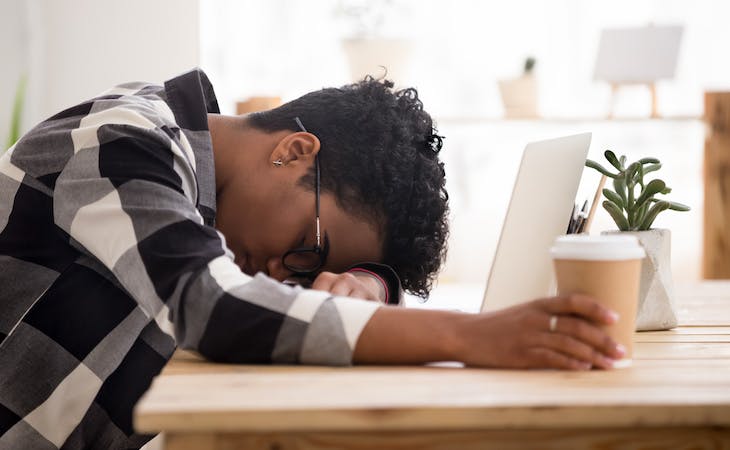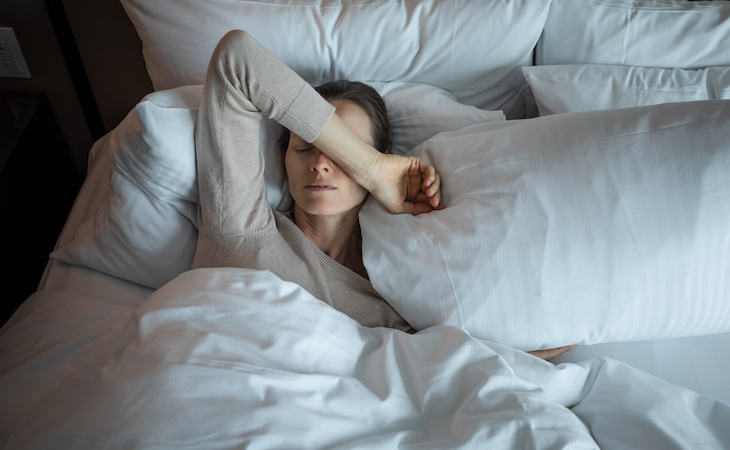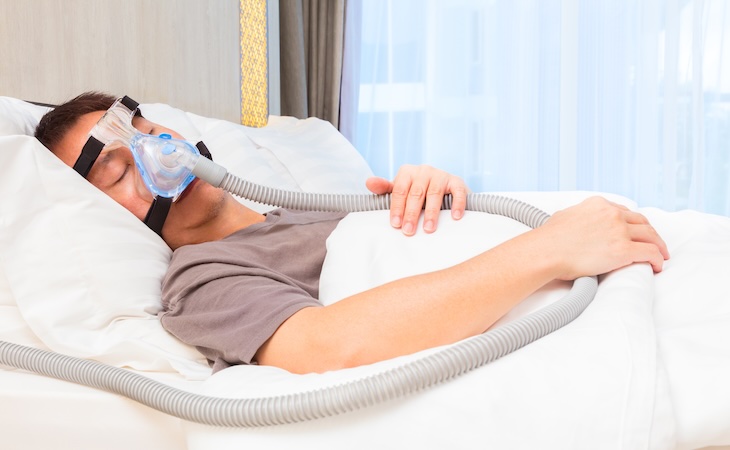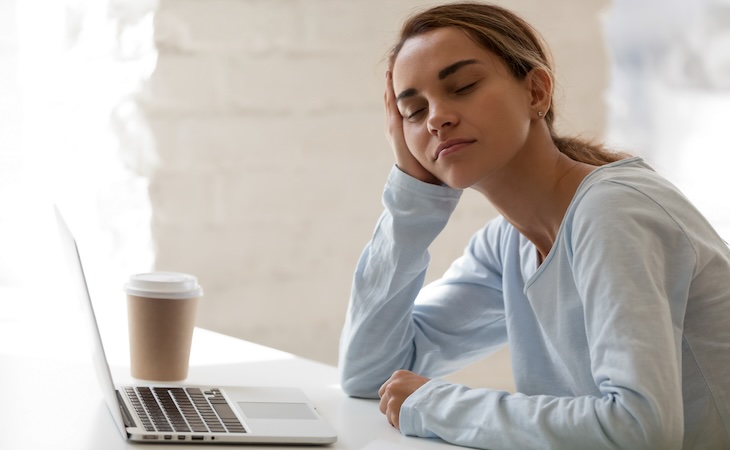Sleep difficulties are so common that the Centers for Disease Control and Prevention (CDC) has called insufficient sleep a public health epidemic. One reason? Between 50 and 70 million Americans have a sleep disorder, according to the American Sleep Association. That can have a major impact on health, as lack of sleep can contribute to the development of heart disease, diabetes, and depression.
Most common sleep disorders
Some of the most common sleep disorders include insomnia, restless legs syndrome (RLS), sleep apnea, narcolepsy, night terrors, and sleepwalking. Here are the basics you should know about each of them.
Insomnia
We all have a bad night of sleep now and then. In fact, the CDC estimates one in three Americans isn’t getting the sleep they need. Does that mean you’re an insomniac? Not necessarily. When it comes to insomnia, there are two types: short-term and chronic.
Short-term is defined as sleep issues that last less than three months, while chronic means you’ve been dealing with sleep woes at least three nights a week for three months. Causes can include health problems such as chronic pain, consuming substances like nicotine and alcohol that disturb sleep, and behavioral and mental health disorders like stress and anxiety.
Treating insomnia
If you’re one of the 10% to 30% of adults who has some type of insomnia, numerous treatment options are available. The gold standard is cognitive behavioral therapy, which involves following good sleep hygiene like going to bed and waking up at relatively the same time every day and limiting or eliminating alcohol and potentially cutting out caffeine. If lifestyle changes don’t work, medication may help.
Restless legs syndrome
If you have an uncontrollable and often uncomfortable urge to move your legs or feet (usually on both sides of the body), you might have RLS. While this sensation can happen when you’re sitting, most of the symptoms occur during the night, which can interrupt sleep, according to Mayo Clinic.
People who have this condition describe a myriad of sensations, including crawling, creeping, itching, aching, and throbbing. Relief comes from movement. What causes RLS? That’s often tough to know, but family history and pregnancy and hormonal changes can play a role. (Learn about hypnic jerks and how to treat them.)
Treating Restless legs syndrome
Lifestyle habits can help alleviate symptoms of RLS. That includes doing things like getting regular exercise, avoiding caffeine, taking a warm bath, getting leg massages, practicing good sleep hygiene, applying cold or warm packs on your limbs, and using an RLS-designed foot wrap.
Your doctor might also prescribe medication or check to see if you have an iron deficiency, which can accompany symptoms of RLS.
Sleep apnea
Sleep apnea is one of the most common sleep disorders. It can affect children as well as adults and men as well as women (though more men experience apnea). Trouble is, sleep apnea in many people goes undiagnosed, which can impact health, increasing the risk for high blood pressure and heart disease.
Symptoms that should make you suspect you have sleep apnea include disrupted breathing (it’s either hard to breathe, or you might stop breathing for up to a minute at a time), morning headaches, extreme daytime fatigue, irritability, difficulty with clear thinking, and limited attention span.
Snoring (which your bedmate might notice first), needing to go to the bathroom frequently in the night, and having a dry mouth or sore throat when you wake up are other signs. What causes apnea? Variables like smoking, sleeping on your back, family history, alcohol, high weight, nasal congestion, hormone conditions like hypothyroidism, and simply your anatomical features may be the cause. (Learn about the top reasons why people yawn.)
Treating sleep apnea
If you (or your partner) suspects you have sleep apnea, see a doctor who will help you determine your treatment plan. Lifestyle changes like losing weight, sleeping on your side, and reducing any sedatives you’re using may be enough for some people to resolve the issue.
Others, however, need special equipment, either a continuous positive airway pressure (CPAP) or bi-level positive airway pressure (BiPAP) machine to help keep their airway open during sleep.
Narcolepsy
Nodding off frequently throughout the day, even when chatting or working? Having sudden urges to sleep in the afternoon, perhaps doing so for as long as 30 minutes? These are the classic signs most commonly associated with narcolepsy, but other symptoms could also occur, including a sudden loss of muscle tone. This is called cataplexy, which can cause slurred speech or total muscle weakness; it’s often triggered by some intense emotion.
You might even experience sleep paralysis, which means you may not be able to speak or move when you wake up or go to sleep. Doctors still aren’t sure what causes narcolepsy. In some individuals, having low levels of a brain chemical called hypocretin may play a role. Genetics may also be a factor.
Treating narcolepsy
Narcolepsy doesn’t have a cure per se, but your doctor may be able to prescribe medications and suggest lifestyle changes like taking naps, exercising regularly, setting and maintaining a consistent sleep-wake schedule, and avoiding alcohol and nicotine.
Night terrors
These are also called sleep terrors, and unlike nightmares where you wake up from your dream, a person experiencing night terrors stays asleep while exhibiting intense fear, screaming, and flailing. They might even sleepwalk during this event.
Terrors affect children more than adults and can last anywhere from a few seconds to a few minutes, according to Mayo Clinic. Causes vary from sleep deprivation and stress to fever and disruptions in sleep. Other conditions that interfere with sleep like medications, sleep apnea, and alcohol use can also trigger night terrors.
Treating night terrors
Because night terrors come with the potential for injury, increasing safety and identifying the causes or triggers are the first line of defense in a treatment plan. The sleep terrors may actually be associated with another medical or mental health issue, so doctors will work to identify and treat that first. They may also recommend you address stress and, in rare cases, go on medication. (This is why you can’t sleep by yourself.)
Sleepwalking
Contrary to its name, sleepwalking doesn’t only mean walking while sleeping. People who sleepwalk can also do things like get dressed, run, urinate (usually in inappropriate places), and even participate in sexual behaviors. These events usually last no more than half an hour, although SleepFoundation.org notes that most last under 10 minutes.
At that time, you might go back to bed and fall asleep, or while you’re out of bed, you might wake up, often being confused as a result. This disorder happens more frequently in kids than adults, and causes can include stress, sleep apnea, RLS, alcohol, medications, fever, brain injury, family history, and sleep deprivation.
Treating sleepwalking
Because sleepwalking events often become less frequent as you age, they usually don’t require treatment. If help is needed, you can work with your doctor to identify a cause and treatment plan.
What’s causing you to jolt awake from a sound sleep? Here are the top reasons why you keep waking up in the middle of the night.




